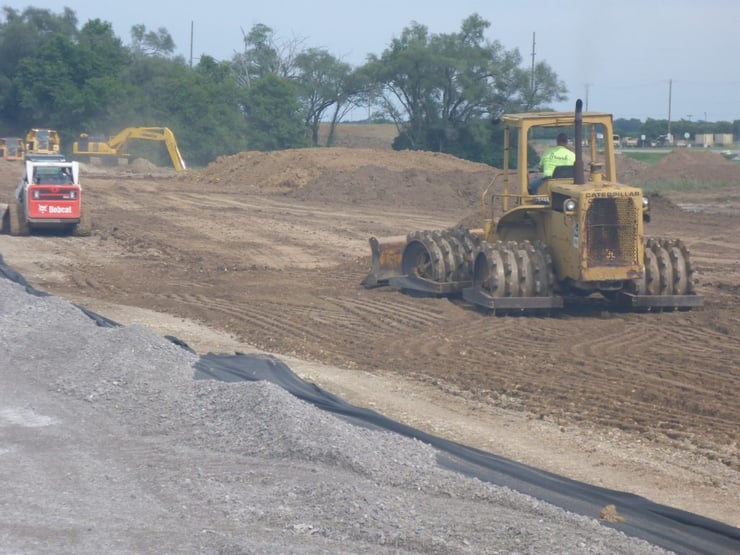Benchmark Service: Construction Phase Services
Issue: A new pavement system built over a filled (imported) substrate can fail quickly if proper steps and practices are not utilized during placement.
Solution: Projects having areas of soil subgrade grading, including fill, require specialized equipment and techniques to minimize or eliminate future settling. When encountering fill operations, soil must be placed in layers of optimal moisture for compaction and then thoroughly compacted with sheepsfoot or padfoot compactors to attain maximum density so it does not settle in the future. A soil technician needs to sample the material and run lab tests on it to get a representative proctor value to be used in the nuclear density gauge. The nuclear density gauge then tests the placed fill soil to determine whether the optimal moisture is present and the density with compactive efforts have been achieved.
Potential Impacts: Without densely compacted soil to build up from, no matter how well the crushed aggregate base course (CABC) and pavement is placed, the pavement system will be susceptible to future settling and will likely also impact the ability to attain CABC and pavement density. The density of materials placed is very critical to a long-lasting pavement. Pavement that lasts as long as possible is desired in order to lower long-term costs of a very expensive asset on a site. Rehabilitating pavements sooner than what is otherwise necessary to achieve proper life expectancy is costly and not fiscally responsible.
 |
| Padfoot compactor repeatedly rolls and compacts placed fill material prior to fine grading and smooth drum compaction. |
